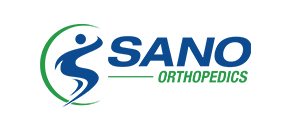Office Evaluations
Image Guided Technologies
With the latest advances in computer and imaging technology, surgeons are now able to visualize a virtual image of the operative area in real time, before and during surgery. The technique assists the surgeon to precisely plan the surgery.
Image guidance technology employs a high-performance computer, medical algorithm software, monitor, cameras, and specialized surgical tools, the combination of which results in a better outcome for patients.
Ultrasound
Ultrasound imaging is a diagnostic procedure that uses high-frequency sound waves to produce images of the internal structures of your body. It is used in the diagnosis and treatment of different conditions and to monitor the development of an unborn child during pregnancy. Diagnostic ultrasound is available through the home health service for the elderly, bedbound, and those who wish to perform the test at home for various reasons.
It uses a portable ultrasound machine that can easily be transported. The sound waves used are produced by a device called a transducer. As they pass through your body they produce echoes, which are captured to create real-time images that can be observed on a computer screen and interpreted by your doctor. The procedure is painless and has no risks.
Guided Injections
Ultrasound guided injection is a minimally invasive procedure used for treating various musculoskeletal painful conditions such as tendonitis, bursitis and neuritis or to perform cyst aspiration. It is also an excellent tool for guiding the placement of needles for both diagnostic as well as therapeutic purposes.
Magnetic Resonance Imaging
Magnetic resonance imaging (MRI) creates images of internal body structures (bones and soft tissues) with the help of magnetic fields. A regular MRI scanner requires that you lie on a table in an enclosed space within a magnetic field with unpleasant sounds and gushes of air. Your body is strapped at various places in order to keep you still, which is necessary to produce clear images. This may be associated with some discomfort especially for children, obese patients and people with anxiety or claustrophobia. An open MRI is an innovation to make MRI scanning a more pleasant experience.
In an open MRI, you are not confined to a narrow space such as a tube or tunnel, instead you have two magnetic plates on either side of you. It can accommodate all body shapes, positioning is more comfortable and unpleasant sounds are minimized. Open MRI also has the advantage of imaging extremities such as the shoulder, hand, wrist or foot.
However, the drawbacks of open MRI include the extended length in obtaining images and lower resolution of images (0.4 T vs. 1.5 or 3T) when compared to conventional MRI. It may also not be recommended for imaging of small structures such as fingers and toes.







